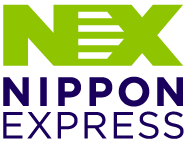Conducting an Employee Engagement Survey can be a powerful tool to identify areas of improvement within your organization. This survey enables you to gather valuable insights directly from employees, providing a comprehensive understanding of their sentiments, satisfaction levels, and engagement with the workplace.
Key ways an Employee Engagement Survey helps identify areas of improvement include:
- Holistic Employee Feedback: The survey allows employees to express their opinions anonymously, creating an environment where they feel comfortable sharing both positive feedback and areas that need improvement.
- Pinpointing Concerns and Challenges: By analyzing survey responses, you can pinpoint specific pain points and challenges that impact employee morale and productivity. This includes aspects related to company culture, leadership, communication, and work processes.
- Assessing Managerial Effectiveness: The survey evaluates employees' perceptions of their managers' leadership and support. Understanding these insights helps identify areas where management training or support is necessary.
- Identifying Communication Gaps: Employee feedback helps identify communication gaps within the organization. Understanding how information flows and if employees feel heard fosters a more transparent and collaborative work culture.
- Evaluating Recognition and Rewards Programs: The survey assesses whether employees feel adequately recognized and rewarded for their contributions. This insight allows you to refine existing recognition programs or implement new ones to boost morale.
- Uncovering Training Needs: Employee feedback can reveal areas where additional training and development opportunities are needed. Addressing these needs can enhance skills, boost employee confidence, and lead to increased job satisfaction.
- Measuring Alignment with Company Values: Understanding employees' alignment with company values helps gauge how well your organizational culture resonates with the workforce.








